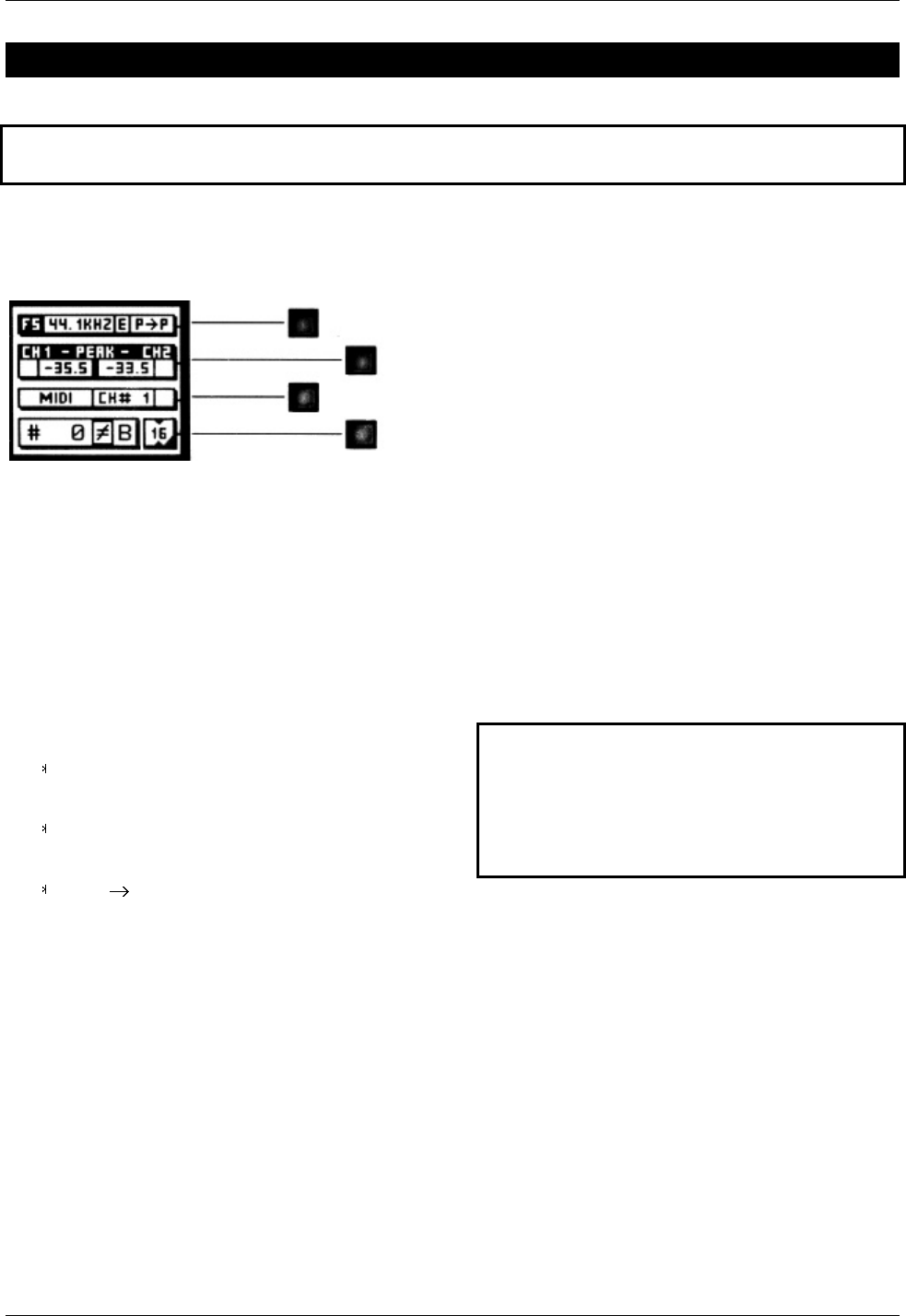
OPERATING INSTRUCTIONS FOR GAMBIT EQUALIZER EQ1-DYN OPERATION
Daniel Weiss Engineering Ltd., Florastr. 42, CH-8610 Uster Page 6 of 27
) +41 1 940 20 06 2 +41 1 940 22 14 8 http://www.weiss.ch * weiss@weiss.ch
OPERATION
The following explanations assume that the equalizer is in power-up mode, i.e. no menu is active.
If a menu is active, press the “menu” key repeatedly until the status display appears.
Status Display
Graph 2: Status Display
The status display consists of four groups display-
ing audio signal properties and information about
the current state of the EQ1. The groups are
situated adjacent to the softkeys to the right of
the LCD (Graph 2).
Channel Status Group
Situated adjacent to key A, displays the following
information:
sampling frequency in kHz: “44.1”, “ 48”,
“88.2” or “96”
pre-emphasis: “E” appears if pre-emphasis
is set (empty if not used)
input output channel status data format:
“C” for consumer and “P” for professional
To change the output channel status data format,
press key A and select format type or loop
through.
Peak Group
Situated adjacent to key B, this group contains a
peak-hold and an over-hold for each channel. To
reset these values press key B twice.
Peak-Hold
The numeric peak value is measured relative to
0dBFS, where 0dB equals digital full scale.
Use this value to set the optimal gain for a specific
session. Reset it for every session.
Over-Hold
Whenever an over is encountered, the boxes to
the side of the peak-hold values are marked.
The functions of the over-LED’s and the over-
hold both depend on the NUMBER OF
CONSECUTIVE OVER-SAMPLES setting. To adjust this
setting, press key B once. Use the “gain/ data”
encoder to change the value, then press “menu”
to return to the status display.
This setting defines the number of consecutive
over-samples needed for an over-indication. To
indicate every over-sample, enter 1. If another
value is entered, you are still able to detect a sin-
gle over-sample with the peak-hold function.
Over-samples are defined as exceeding the
24bit integer range. A full scale signal
(0dBFS) will not be treated as over. A signal
that triggered an over in a previous pro-
cessor in the audio chain will therefore not
trigger an over in the EQ1 (unless boosted).
Remote Group
Situated adjacent to key C, displays remote con-
trol protocol (“MIDI”, “RS 232” or “RS 422”),
channel (“1” - “16”) and status (on/ off, displayed
with check box).
For remote control set-up see chapter Remote
Control.
Key B
Key C
Key A
Key D
Key C


















